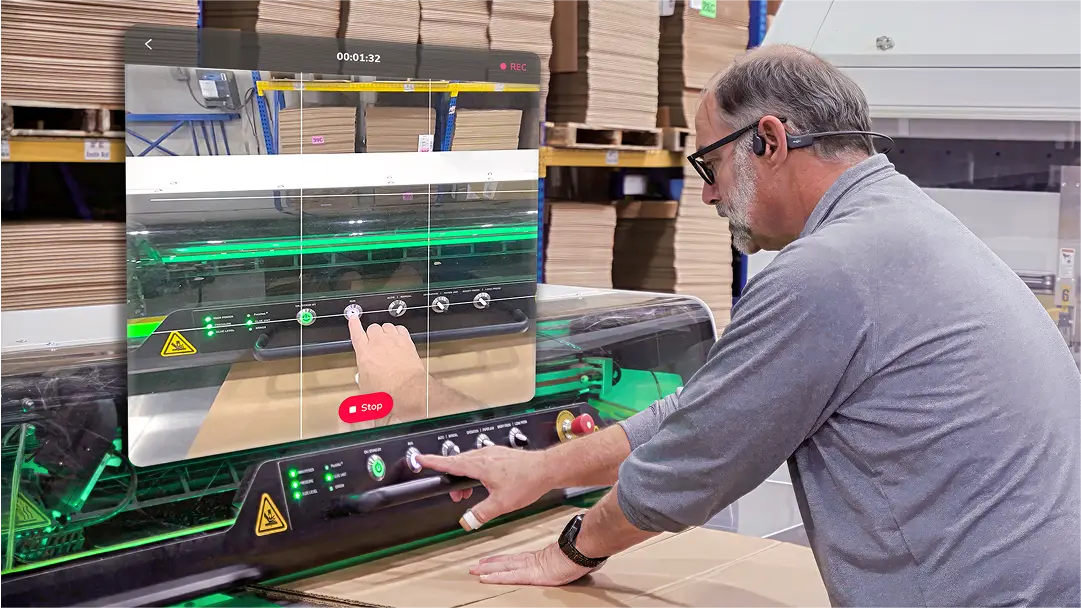Key takeaways
- Outdated SOPs create costly ripple effects, errors, compliance risks, wasted SME time, and higher turnover.
- Static documentation slows onboarding and frustrates frontline workers, eroding productivity and morale.
- Modern SOP systems reduce risk, protect revenue, and empower employees with accurate, real-time guidance.
Standard Operating Procedures (SOPs) were established to maintain consistent and safe workforces; however, they often become outdated documents that fail to keep pace with the changing environment. When procedures don’t align with how work is actually done, the result isn’t just inefficiency; it’s errors, compliance risks, and frustrated employees. Operators end up guessing, supervisors spend hours answering repeated questions, and SMEs are pulled away from strategic initiatives to put out fires on the floor.
Modern operations require more than binders and outdated PDFs. They demand real-time, visual guidance that lives where work happens, providing employees with the answers they need instantly. Without it, the hidden costs of outdated SOPs accumulate: lost productivity, increased turnover, and the ongoing burden of rework. In an environment where agility is the difference between growth and stagnation, relying on outdated procedures is no longer a sustainable option.
The 4 hidden costs of outdated procedures
Workflow errors & downtime
Procedures that don’t reflect how work is actually done create ripple effects across the organization. Employees waste time interpreting unclear steps, managers spend hours correcting mistakes, and production slows down under the weight of rework. These small inefficiencies compound quickly, turning into measurable losses in both productivity and morale.
The risks of outdated systems are well-documented. A recent Workday report revealed that outdated federal HR systems cost taxpayers nearly $1 billion in lost productivity every year, with 89% of federal HR leaders admitting these legacy systems are significantly hindering performance and mission delivery. Outdated SOPs have a similar effect on frontline operations: they drag down efficiency, increase errors, and prevent employees from performing at their best.
When workers are forced to guess or rely on outdated instructions, errors become inevitable. Those mistakes often lead to downtime, compliance issues, and safety concerns — consequences that could be avoided with guidance that reflects the way work is actually performed today.
Compliance risks
Regulatory standards are constantly evolving, and outdated SOPs leave your organization vulnerable. When procedures fall out of sync, the risks aren’t hypothetical; they can hit deep into your bottom line. A landmark study by Ponemon Institute and Globalscape found that the average cost of non‑compliance is $14.82 million, compared to $5.47 million for staying compliant, making non-compliance nearly three times more expensive than maintaining up-to-date procedures.
In regulated industries such as healthcare, manufacturing, and finance, even minor deviations from updated regulations can lead to fines, remediation costs, or operational shutdowns. That’s on top of the internal burden: time-consuming audits, retraining programs, and legal fees all stack up fast.
In short, outdated SOPs don’t just pose a theoretical risk; they exact a steep, real-world cost. When procedures lag behind regulation, the financial fallout can be enormous, from penalties and lost productivity to damage to your brand's credibility and trust with stakeholders. Ensuring your SOPs evolve alongside regulatory changes is essential.
Employee turnover and frustration
Static SOPs don’t just create inefficiencies; they create frustration. For new employees, outdated procedures mean the first weeks on the job are spent piecing together information through trial and error, shadowing, or asking the same questions repeatedly. This slows down onboarding, makes it harder to gain confidence, and leaves new hires feeling unsupported right when they need structure the most.
For experienced workers, outdated SOPs are a constant reminder that the tools provided don’t reflect reality. Instead of relying on accurate, up-to-date guidance, they often turn to memory or informal workarounds. Over time, this erodes trust in the systems that are supposed to support them.
The burden falls especially hard on subject matter experts (SMEs). Instead of focusing on higher-level problem solving or innovation, they’re pulled away to reteach the basics or correct errors that stem from outdated documentation. This cycle not only wastes their time but also contributes to burnout across the team.
Ultimately, messy, outdated SOPs create a workplace where people feel like they’re working against the system rather than with it, and that’s a recipe for higher turnover, lower morale, and lost potential.
Overuse of subject matter experts
When SOPs don’t reflect the way work actually gets done, subject matter experts inevitably become the safety net. They’re the ones employees turn to when instructions don’t make sense, when a step is missing, or when the official process doesn’t match reality. While SMEs are invaluable resources, relying on them to fill procedural gaps comes at a steep cost.
Instead of devoting their expertise to innovation, process improvement, or strategic initiatives, SMEs are pulled back into day-to-day troubleshooting. Every time they stop to answer a question, walk someone through a task, or correct an error caused by outdated documentation, their capacity for higher-value work shrinks. Over time, this constant cycle of interruptions turns them into bottlenecks in the workflow.
The hidden cost is twofold: frontline teams grow dependent on SMEs instead of reliable systems, and SMEs themselves become overextended, risking burnout and disengagement. What should be the organization’s most valuable strategic resource ends up trapped in an endless loop of patching problems that could have been avoided with accurate, up-to-date SOPs.
Building a smarter approach to SOPs
The traditional way of developing standard operating procedures—static documents, binders, and PDFs—no longer fits the pace or complexity of today’s work. Teams need SOPs that are dynamic, easy to update, and accessible where the work actually happens. Without this, organizations risk falling into the same cycle of inefficiency, with every process change demanding time-consuming rewrites and every frontline question draining SME capacity.
That’s why many organizations are now turning to digital work instruction software and knowledge-sharing tools designed to make SOP creation faster and more adaptable. These modern approaches reduce the burden of manual documentation, make compliance more straightforward to manage, and capture operational knowledge in ways that keep it usable long after processes evolve.
By shifting from static documentation to automated SOP creation, businesses not only avoid the hidden costs of outdated procedures but also set the stage for consistent, scalable performance and more empowered frontline teams.
Why modern SOP systems matter
Outdated SOPs aren’t just inconvenient; they’re expensive. Every error, compliance failure, wasted SME hour, and frustrated employee compounds into a drain on both productivity and revenue. Left unaddressed, these hidden costs erode competitiveness and slow down growth.
Modernizing procedures is about more than updating documentation; it’s about rethinking how knowledge flows through the organization. When guidance is accurate, accessible, and aligned with how work is really done, teams move faster, compliance risks shrink, and turnover drops. SMEs can finally focus on innovation instead of firefighting, while new employees are on board with clarity and confidence.
Organizations that invest in more innovative SOP systems don’t just gain efficiency; they build resilience. They protect revenue, reduce risk, and empower employees to work smarter, safer, and more effectively in every task. In a landscape where adaptability is the accurate measure of success, leaving SOPs behind is no longer an option.









-min.jpg)





